
Lisbon: The Sun-Kissed Charm of Portugal
Discover Lisbon, Portugal's capital of culture and history, with its stunning views, vibrant neighborhoods, and rich maritime heritage.
Lisbon, the capital city of Portugal, is a vibrant blend of old-world charm and modern energy. Nestled on the edge of the Atlantic Ocean, this sun-kissed city is known for its picturesque hills, historic trams, and stunning panoramic views. From the cobbled streets of Alfama to the grand squares of Baixa, every corner of Lisbon tells a story. Lisbon's rich history is intertwined with its maritime heritage. The city's many museums, such as the Maritime Museum and the National Tile Museum, offer fascinating insights into its past. The iconic Belem Tower and Jeronimos Monastery, both UNESCO World Heritage sites, stand as testaments to Lisbon's golden age of exploration. Beyond its historical allure, Lisbon is a city of vibrant neighborhoods, each with its own unique charm. Bairro Alto is the heartbeat of Lisbon's nightlife, offering an array of bars and live music venues. Meanwhile, the LX Factory, a trendy arts district, showcases the city's contemporary creative scene. For food lovers, Lisbon's culinary landscape is a delight, from traditional Portuguese dishes to innovative modern cuisine. Lisbon's coastal location means there are plenty of opportunities to enjoy the outdoors. The city's many miradouros (viewpoints) offer breathtaking views, perfect for a leisurely afternoon. And just a short trip away, you can find beautiful beaches and the stunning Sintra mountains, making Lisbon an ideal destination for both urban exploration and nature escapes.
Local tips in Lisbon
- Take Tram 28 for a scenic ride through the city's historic neighborhoods.
- Visit the Belem district early in the morning to avoid crowds.
- Try the famous Pastel de Nata at Pasteis de Belem.
- Wear comfortable shoes as Lisbon's streets can be hilly and cobbled.
- Explore the LX Factory for unique shopping and dining experiences.
Neighbourhoods in Lisbon
Lisbon: The Sun-Kissed Charm of Portugal
Lisbon, the capital city of Portugal, is a vibrant blend of old-world charm and modern energy. Nestled on the edge of the Atlantic Ocean, this sun-kissed city is known for its picturesque hills, historic trams, and stunning panoramic views. From the cobbled streets of Alfama to the grand squares of Baixa, every corner of Lisbon tells a story. Lisbon's rich history is intertwined with its maritime heritage. The city's many museums, such as the Maritime Museum and the National Tile Museum, offer fascinating insights into its past. The iconic Belem Tower and Jeronimos Monastery, both UNESCO World Heritage sites, stand as testaments to Lisbon's golden age of exploration. Beyond its historical allure, Lisbon is a city of vibrant neighborhoods, each with its own unique charm. Bairro Alto is the heartbeat of Lisbon's nightlife, offering an array of bars and live music venues. Meanwhile, the LX Factory, a trendy arts district, showcases the city's contemporary creative scene. For food lovers, Lisbon's culinary landscape is a delight, from traditional Portuguese dishes to innovative modern cuisine. Lisbon's coastal location means there are plenty of opportunities to enjoy the outdoors. The city's many miradouros (viewpoints) offer breathtaking views, perfect for a leisurely afternoon. And just a short trip away, you can find beautiful beaches and the stunning Sintra mountains, making Lisbon an ideal destination for both urban exploration and nature escapes.
When is the best time to go to Lisbon?
Iconic landmarks you can’t miss
Praça do Comércio
Explore Praça do Comércio, Lisbon's breathtaking waterfront plaza filled with history, stunning architecture, and vibrant local culture.

Belém Tower
Discover the rich history and stunning architecture of Belém Tower, a UNESCO World Heritage site in the heart of Lisbon, Portugal.
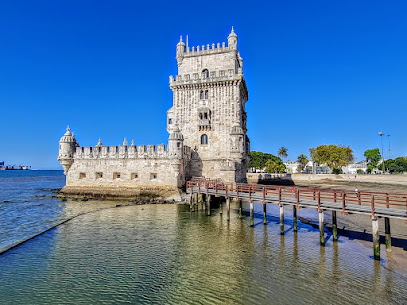
Castelo de São Jorge
Discover the historic charm of Castelo de São Jorge, Lisbon's iconic castle with stunning views and rich cultural heritage.

Jardim da Torre de Belém
Discover the serene beauty and rich history of Jardim da Torre de Belém, a lush garden oasis in the heart of Lisbon, perfect for relaxation and exploration.

Monument to the Discoveries
Discover the Monument to the Discoveries in Lisbon, a majestic tribute to Portugal's maritime history and exploration, offering stunning views and rich heritage.
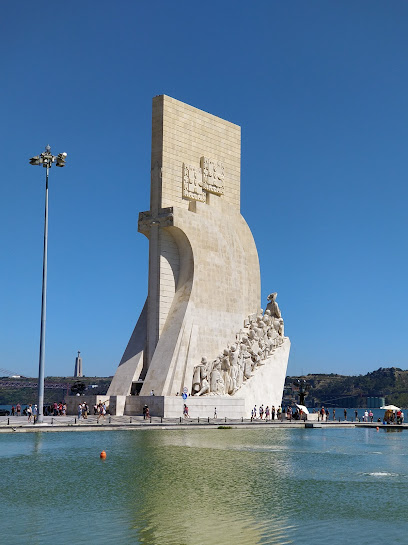
Jerónimos Monastery
Explore the breathtaking Jerónimos Monastery in Lisbon, a UNESCO World Heritage site showcasing stunning Manueline architecture and rich maritime history.

Santa Justa Lift
Experience the enchanting views and unique architecture of the Santa Justa Lift, a must-see landmark in the heart of Lisbon's historic district.
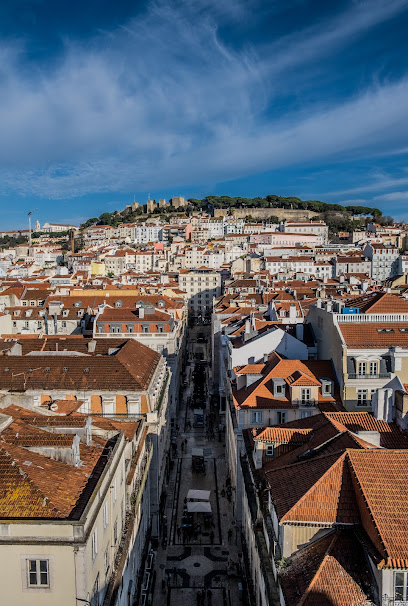
Miradouro de Santa Luzia
Experience breathtaking views of Lisbon from the Miradouro de Santa Luzia, a picturesque observation deck overlooking the Alfama district and the Tagus River.
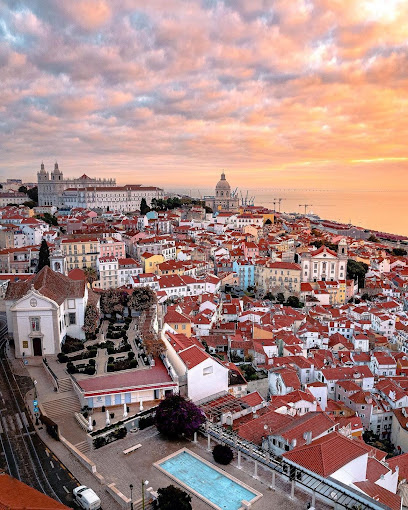
Miradouro de São Pedro de Alcântara
Experience the breathtaking panoramic views and serene atmosphere at Miradouro de São Pedro de Alcântara, a must-visit scenic spot in Lisbon.
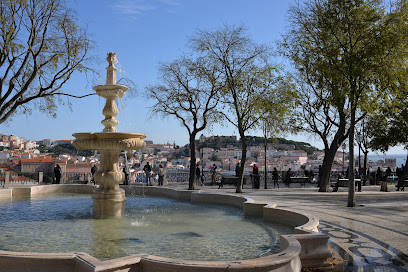
Lisbon Cathedral
Discover the rich history and stunning architecture of Lisbon Cathedral, a must-see destination in the heart of Portugal.
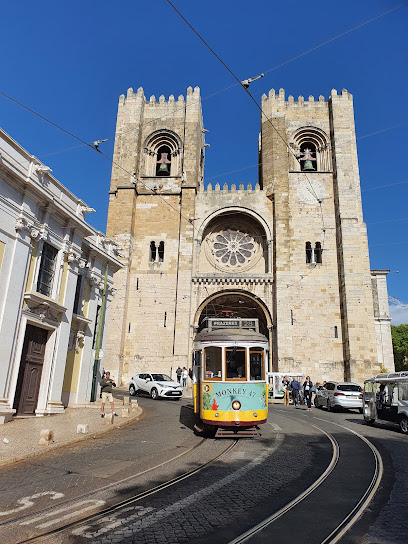
Miradouro da Senhora do Monte
Experience the stunning panoramic views of Lisbon from Miradouro da Senhora do Monte, a tranquil observation deck perfect for capturing the city's beauty.

Arco da Rua Augusta
Explore the Arco da Rua Augusta, Lisbon's majestic triumphal arch, a stunning historical landmark offering panoramic views and rich cultural significance.
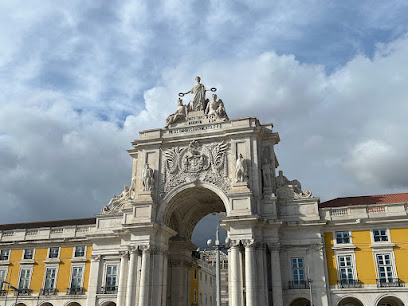
Carmo Convent
Discover the haunting beauty and rich history of Carmo Convent, a captivating archaeological museum in the heart of Lisbon.
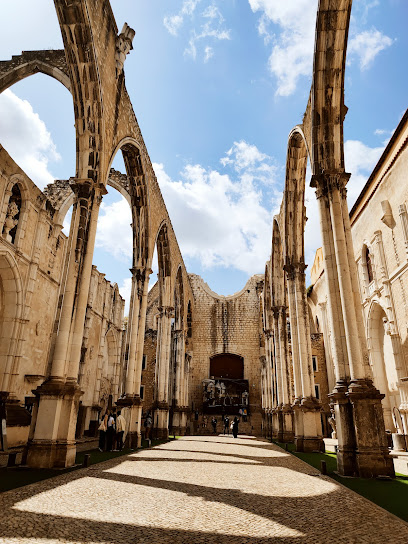
Miradouro da Graça
Experience stunning panoramic views of Lisbon from Miradouro da Graça, a serene observation deck perfect for relaxation and photography.
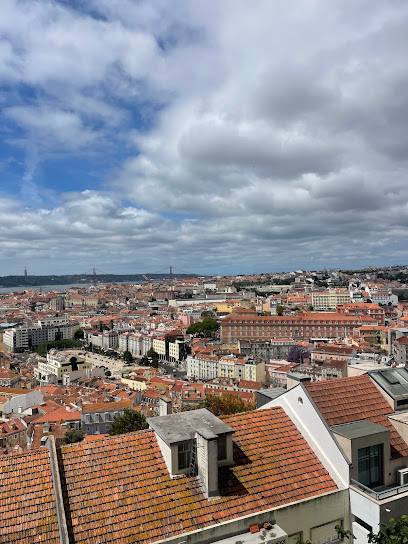
National Pantheon
Discover the National Pantheon in Lisbon, an architectural gem that honors Portugal's greats with stunning views and rich history.

Unmissable attractions to see
Praça do Comércio
Explore Praça do Comércio, Lisbon's iconic plaza, where history meets vibrant culture along the scenic Tagus River.
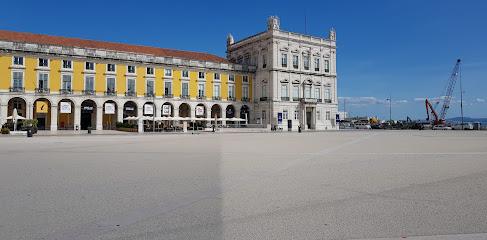
Oceanário de Lisboa
Explore the Oceanário de Lisboa, a captivating aquarium showcasing marine life and promoting ocean conservation in the heart of Lisbon.

National Palace of Pena
Explore the National Palace of Pena, a breathtaking Romantic castle in Sintra, Portugal, rich in history, stunning views, and enchanting gardens.
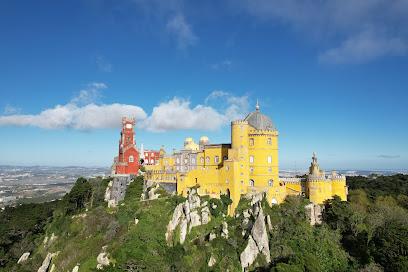
Castelo de São Jorge
Discover the rich history and stunning views of Castelo de São Jorge, a must-visit medieval castle in the heart of Lisbon.
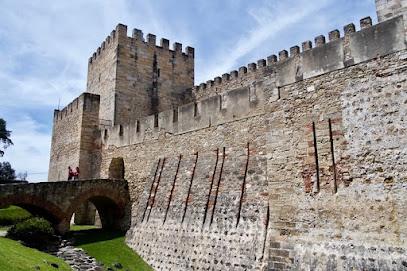
Cape Roca
Discover Cape Roca, the stunning westernmost point of Europe, where breathtaking views and rich maritime history meet in the heart of Portugal.
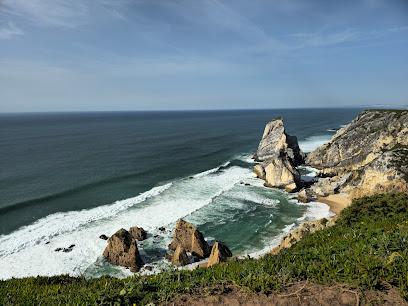
Quinta da Regaleira
Discover the enchanting Quinta da Regaleira, a historical estate in Sintra, Portugal, renowned for its stunning architecture and mystical gardens.
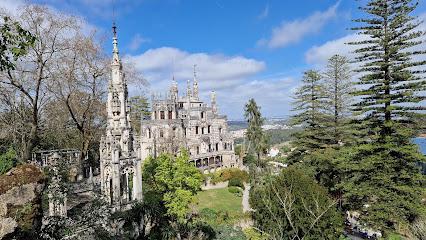
Estádio do Benfica
Discover the heart of Portuguese soccer at Estádio do Benfica, a cultural landmark and home to the celebrated SL Benfica club, in the vibrant city of Lisbon.
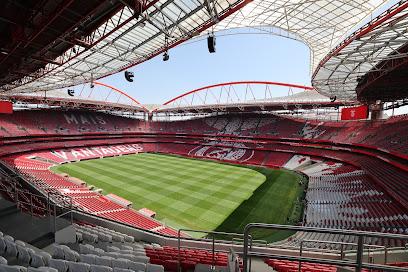
LX Factory
Explore the vibrant artistic scene at LX Factory, Lisbon’s creative hub featuring unique shops, galleries, and delicious dining experiences.
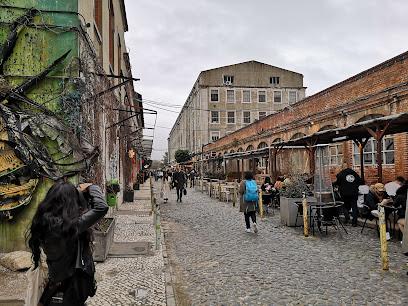
Jerónimos Monastery
Explore the grandeur of Jerónimos Monastery, a UNESCO World Heritage site showcasing Portugal's rich maritime history and stunning Manueline architecture.
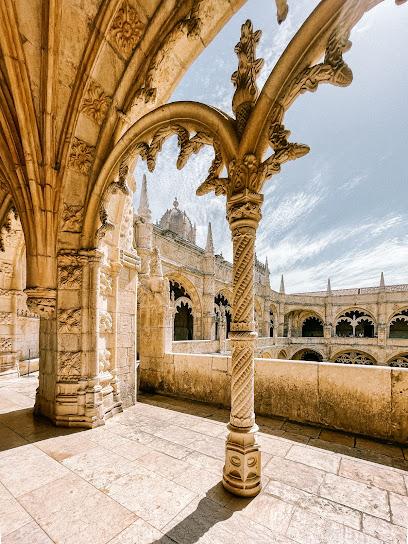
National Palace of Sintra
Explore the National Palace of Sintra, a stunning historical landmark that showcases the rich cultural heritage and architectural beauty of Portugal.
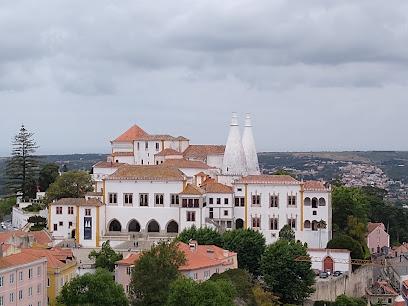
Santa Justa Lift
Discover Lisbon's breathtaking views from the iconic Santa Justa Lift, a stunning blend of history and architecture.
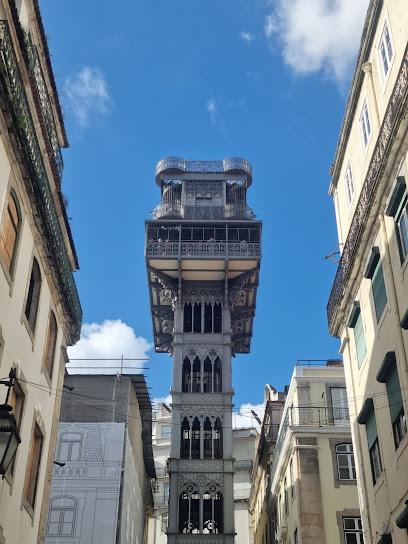
Boca do Inferno
Experience the breathtaking beauty and powerful waves of Boca do Inferno, a stunning coastal attraction in Cascais, Portugal.

Parque Eduardo VII
Discover the beauty of Parque Eduardo VII, Lisbon’s largest park, featuring stunning views, vibrant gardens, and a serene escape in the city.
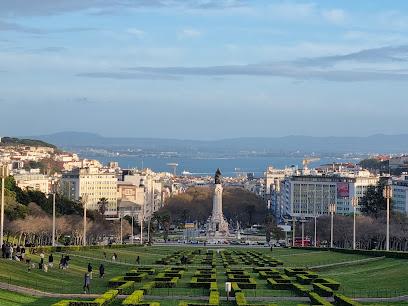
Jardim Zoológico
Discover the enchanting world of wildlife at Jardim Zoológico, Lisbon's premier zoo, featuring diverse animal exhibits and family-friendly experiences.
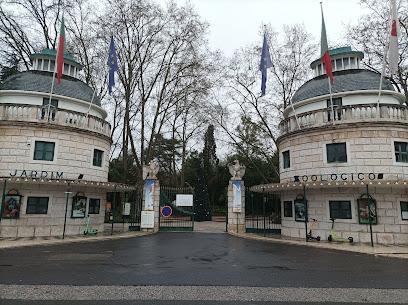
Sanctuary of Christ the King-Portugal
Experience breathtaking views and deep spirituality at the Sanctuary of Christ the King, a must-visit cultural landmark in Almada, Portugal.

Essential places to dine
Cervejaria Ramiro
Experience the best seafood in Lisbon at Cervejaria Ramiro - where fresh flavors meet vibrant atmosphere.
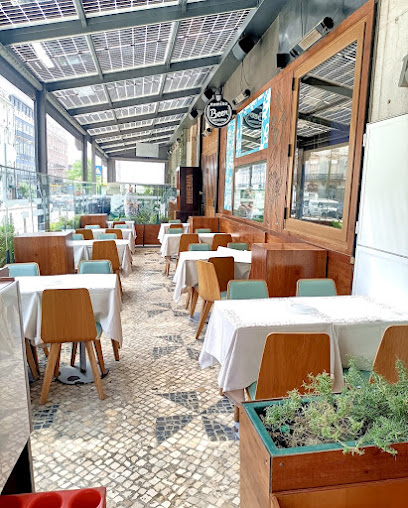
Restaurante Come Prima
Experience authentic Italian cuisine at Restaurante Come Prima in Lisbon, where every dish tells a story of tradition and passion.
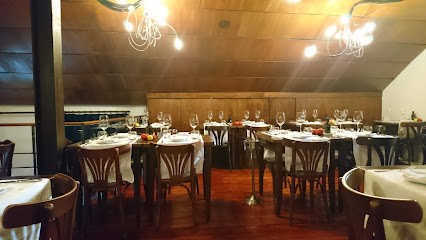
Pateo - Bairro do Avillez
Experience the vibrant culinary delights at Pateo - Bairro do Avillez in Lisbon, where tradition meets modernity in every dish.
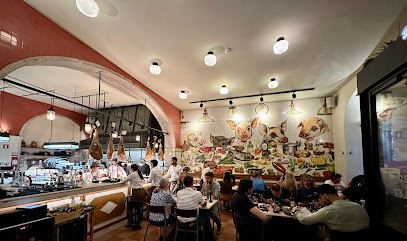
A Cevicheria
Discover authentic Peruvian flavors at A Cevicheria in Lisbon, where vibrant ceviches and traditional dishes await every food lover.
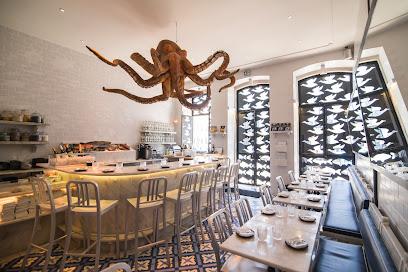
Chapitô à Mesa
Discover Chapitô à Mesa in Lisbon - where breathtaking views meet exquisite Portuguese cuisine in a vibrant atmosphere.

Lisboa Tu e Eu 2
Experience authentic Portuguese cuisine at Lisboa Tu e Eu 2 – where tradition meets flavor in the heart of Lisbon.
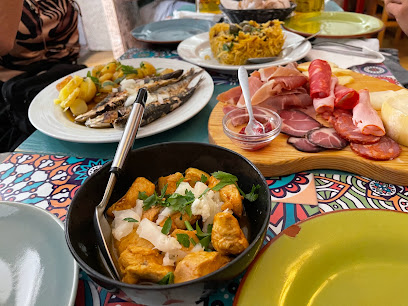
Palácio Chiado
Discover Palácio Chiado: A magnificent restaurant and bar offering exquisite Portuguese cuisine in an elegant palatial setting.
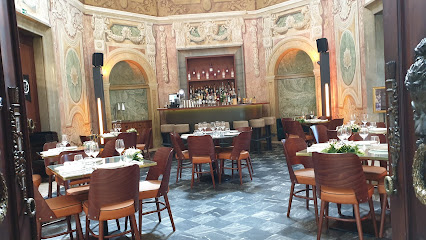
Lisbon Tu e Eu
Experience authentic Portuguese tapas at Tu e Eu in Lisbon - where flavor meets tradition in every bite.
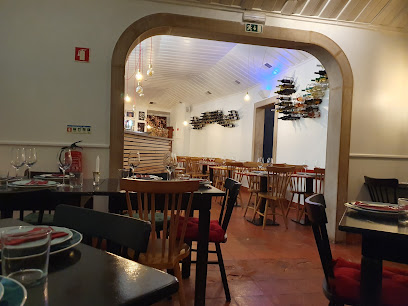
Lost In
Experience culinary innovation at Lost In, where exquisite flavors meet charming garden vibes in Lisbon's vibrant dining scene.
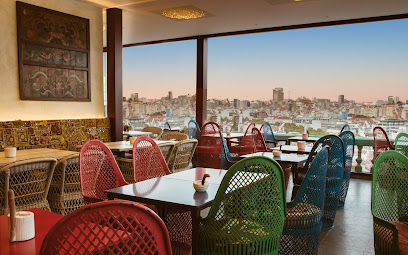
A Provinciana
Experience authentic Portuguese flavors at A Provinciana in Lisbon - where tradition meets taste in a cozy setting.
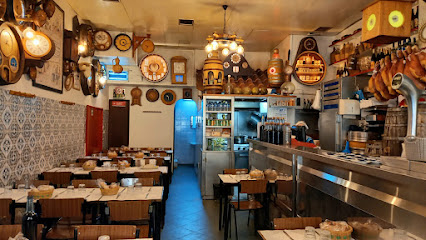
Taberna Sal Grosso
Savor authentic Portuguese cuisine at Taberna Sal Grosso - where tradition meets flavor in a cozy tavern setting.
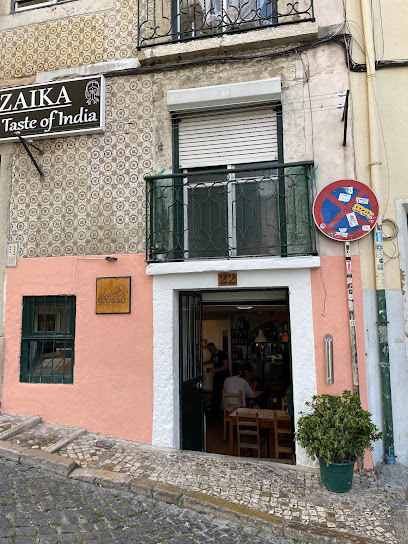
Floresta das Escadinhas
Experience authentic Portuguese cuisine at Floresta das Escadinhas in Lisbon's enchanting setting.
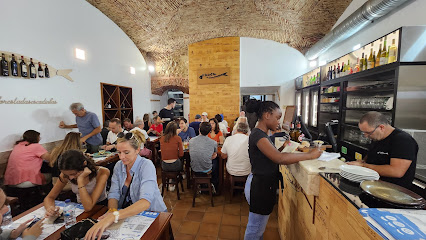
Augusto Lisboa
Experience the vibrant flavors of Lisbon at Augusto Lisboa, where every brunch feels like a celebration with delightful dishes and cozy ambiance.
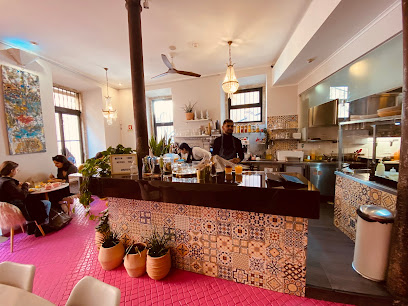
JNcQUOI Avenida
Experience unparalleled dining at JNcQUOI Avenida, where luxury meets culinary artistry in the heart of Lisbon.
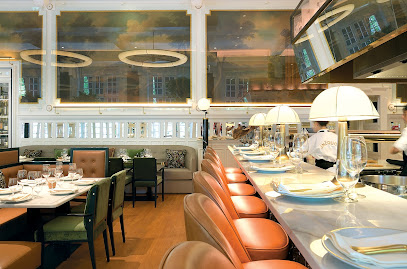
Taberna do Bairro alto
Discover the heart of Portuguese cuisine at Taberna do Bairro Alto in Lisbon's vibrant Bairro Alto district.
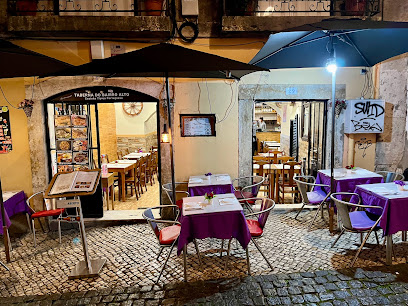
Markets, malls and hidden boutiques
A Vida Portuguesa
Explore A Vida Portuguesa in Lisbon for authentic home goods that celebrate Portugal's rich craftsmanship and cultural heritage.
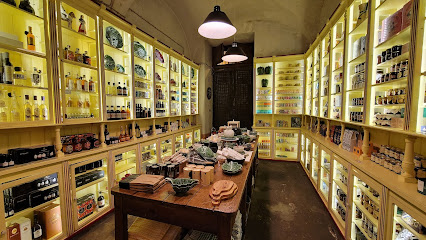
A Outra Face da Lua (Baixa)
Explore the charm of vintage fashion at A Outra Face da Lua in Lisbon's Baixa district, a must-visit for unique clothing and timeless styles.
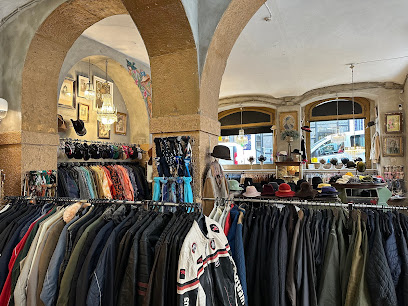
Ás de Espadas vintage store and more
Discover unique vintage fashion treasures at Ás de Espadas in Lisbon, where style meets sustainability in a charming setting.

Fashion Clinic
Explore the latest fashion trends at Fashion Clinic in Lisbon, where style meets sophistication in a chic shopping environment.
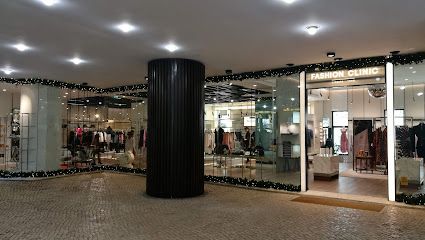
Amazingstore (Príncipe Real)
Explore Amazingstore in Príncipe Real: A magical boutique bursting with whimsical treasures and unique gifts in the heart of Lisbon.
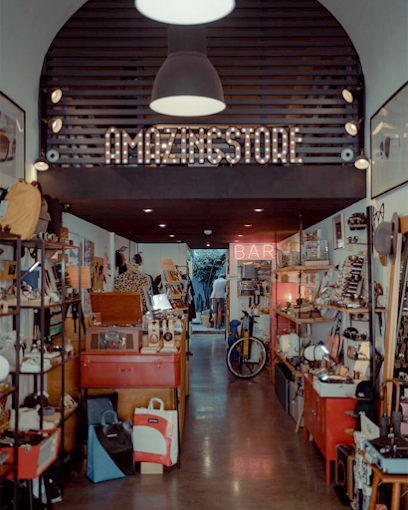
Bairro Arte
Discover Bairro Arte, Lisbon's charming souvenir store offering unique local crafts and interior design treasures to take home.
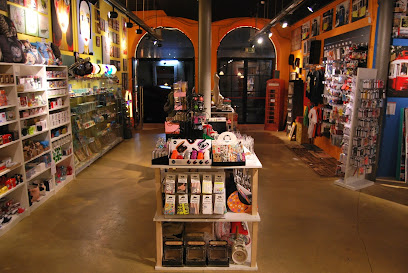
Portfolio - Made of Portugal
Explore a treasure trove of authentic Portuguese crafts and souvenirs at Portfolio - Made of Portugal in Lisbon, where every item tells a story.
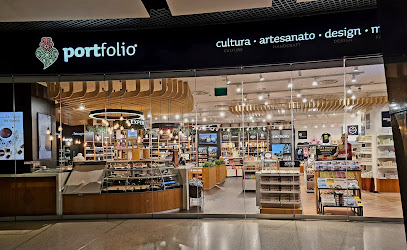
A Loja Azul
Discover the charm of Portuguese craftsmanship at A Loja Azul, featuring exquisite artistic handicrafts in the heart of Lisbon.
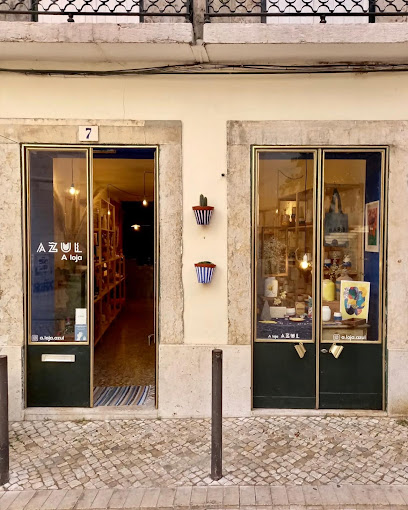
Soma Ideas
Discover Soma Ideas in Lisbon, where local craftsmanship meets modern design in a vibrant handicraft store filled with unique treasures.
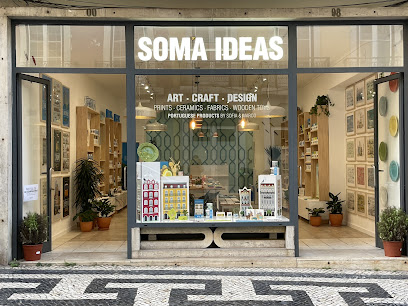
Lisbon Shop
Explore the heart of Lisbon with a visit to Lisbon Shop, your destination for authentic souvenirs and local treasures that capture the city's charm.
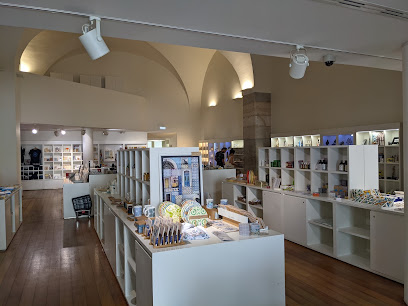
Souvenirs shop (부산아저씨 기념품가게)
Explore 부산아저씨 기념품가게 for authentic souvenirs that capture the spirit of Lisbon, from handcrafted treasures to delightful keepsakes.
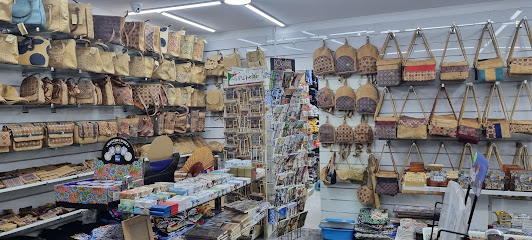
Souvenirs Shop Of Lisbon
Explore the Souvenirs Shop Of Lisbon for unique gifts and mementos that capture the essence of Portugal's rich culture and heritage.
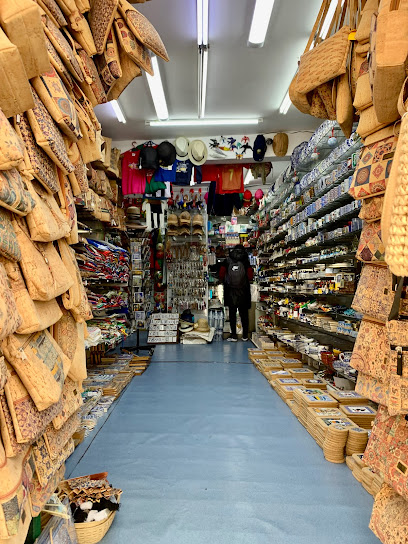
Lisbon Craft
Explore the vibrant artistry of Lisbon Craft, where unique handcrafted treasures and beauty supplies await every traveler.

Ponto Lx - Artesanato contemporâneo
Explore Ponto Lx in Lisbon for a unique collection of contemporary crafts and artisan goods that capture the essence of Portuguese creativity.
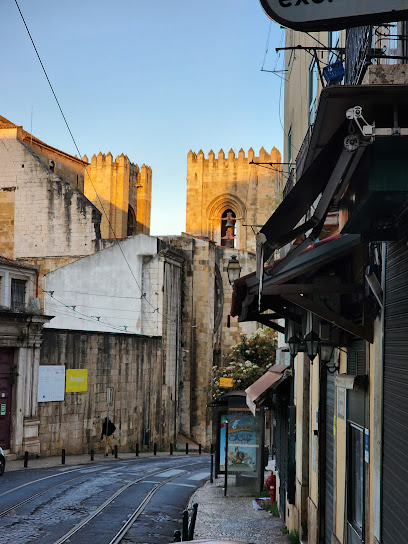
Loja Real
Explore the vibrant fashion scene at Loja Real in Lisbon, where unique styles and local designers come together in a charming boutique setting.

Essential bars & hidden hideouts
Pensão Amor
Discover the eclectic charm of Pensão Amor, a historic bar in Lisbon known for its vibrant atmosphere, live music, and unique decor that captivates every visitor.
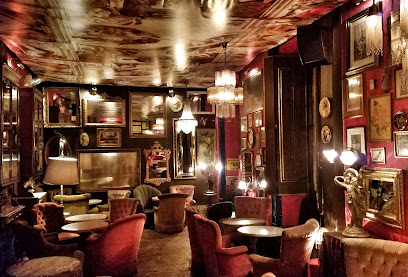
Delirium Café
Discover the vibrant Delirium Café in Lisbon, where beer lovers rejoice in a lively atmosphere filled with delicious food and great company.
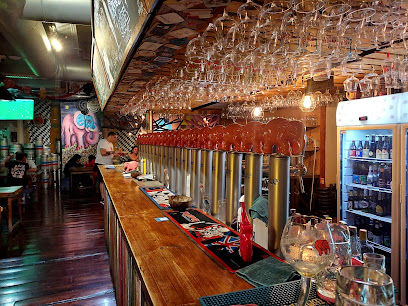
British Bar Lisboa
Discover the lively atmosphere of British Bar Lisboa, where British charm meets Portuguese hospitality in the heart of Lisbon.
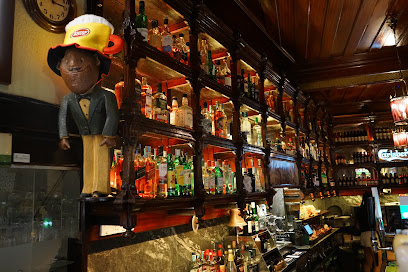
Gin Lovers Bar & Restaurant
Experience the ultimate gin journey at Gin Lovers Bar & Restaurant in Lisbon, where exceptional spirits meet delightful culinary creations.
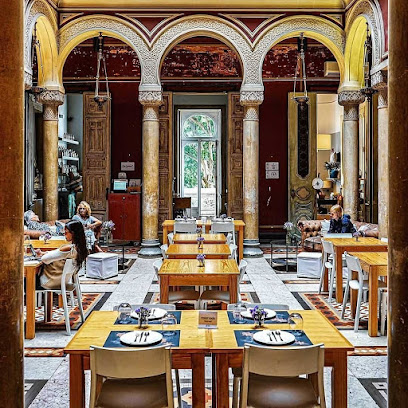
Outro Lado
Discover Outro Lado, a unique bar in Lisbon with a charming beer garden and an exceptional craft beer selection that captures the essence of the city.
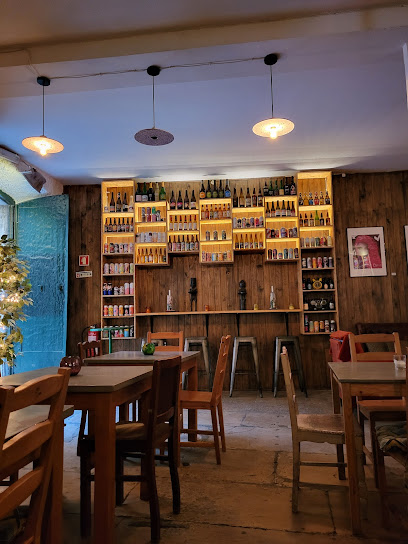
Tasca Mastai
Discover Tasca Mastai, a cozy bar in Lisbon offering exquisite wines and delicious snacks in a warm, inviting atmosphere perfect for unwinding.
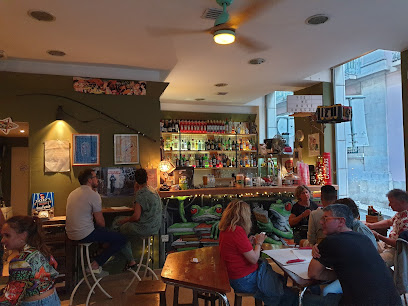
The Old Pharmacy
Discover The Old Pharmacy in Lisbon, where historic charm meets modern nightlife and exquisite local wines.
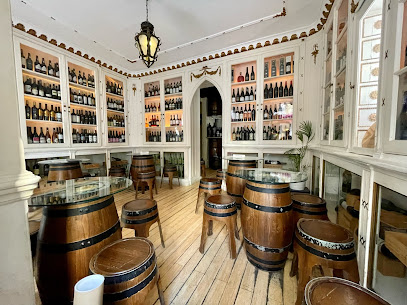
Lisboa Bar
Discover the lively charm of Lisboa Bar, where great drinks and vibrant nightlife come together in the heart of Lisbon.
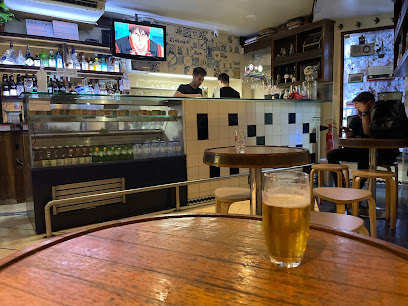
Bar Old Vic
Discover the lively spirit of Lisbon at Bar Old Vic, a must-visit cocktail bar offering an eclectic mix of drinks and vibrant atmosphere.
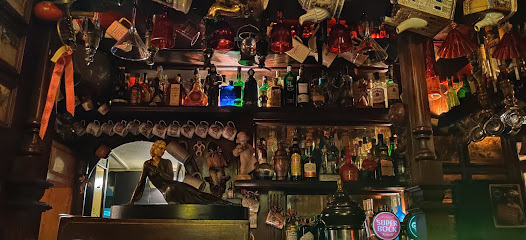
146 Bar
Experience the vibrant nightlife of Lisbon at 146 Bar, a cocktail haven known for its unique creations and inviting atmosphere.
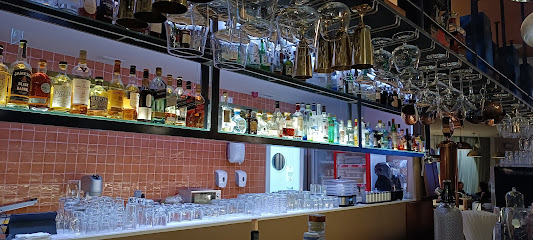
Machimbombo
Discover the vibrant nightlife of Lisbon at Machimbombo, where exquisite cocktails and dynamic DJ performances create an unforgettable experience.
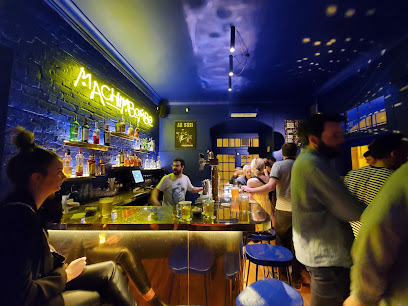
Groove Bar
Discover Groove Bar in Lisbon - a lively cocktail bar offering innovative drinks and a vibrant atmosphere perfect for unwinding and experiencing local nightlife.
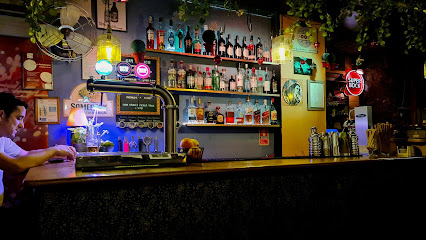
Pub Lisboeta
Discover the vibrant nightlife of Lisbon at Pub Lisboeta, a perfect blend of local flavors and lively ambiance in the heart of the city.
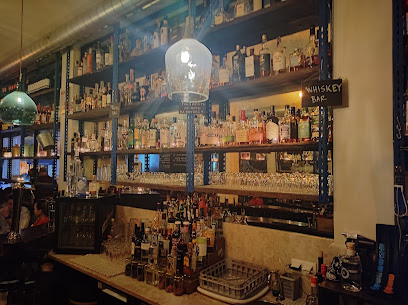
The V Rooftop Bar
Discover Lisbon's breathtaking views and vibrant nightlife at The V Rooftop Bar, a top destination for cocktails and unforgettable experiences.
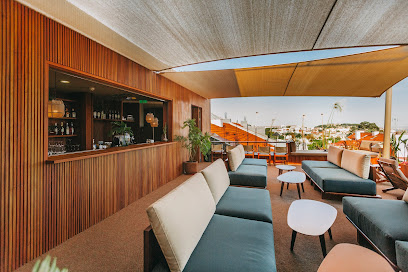
Ruby Rosa - Lisbon Art Stay
Discover the captivating Ruby Rosa Rooftop Bar in Lisbon, where stunning views meet creative cocktails and a lively atmosphere.
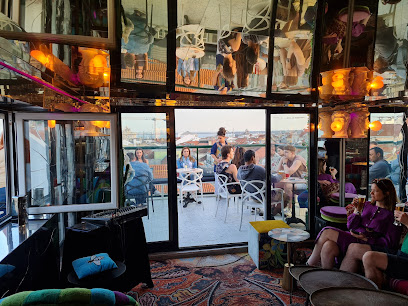
Travel experiences inspired by this city
Explore more travel diariesLocal Phrases
-
- HelloOlá
[oh-LAH] - GoodbyeAdeus
[ah-DEH-oosh] - YesSim
[seem] - NoNão
[now] - Please/You're welcomePor favor/De nada
[por fah-VOHR/deh NAH-dah] - Thank youObrigado/a
[oh-bree-GAH-doo/ah] - Excuse me/SorryCom licença/Desculpe
[kohm lee-SEN-sah/dehs-KOOL-peh] - How are you?Como está?
[KOH-moo ehs-TAH] - Fine. And you?Bem. E você?
[behm/eh voh-SEH] - Do you speak English?Fala inglês?
[FAH-lah een-GLEHSH] - I don't understandNão percebo
[now pehr-SEH-boo]
- HelloOlá
-
- I'd like to see the menu, pleaseGostaria de ver o menu, por favor
[gohs-TAH-ree-ah deh vehr oo MEH-noo/por fah-VOHR] - I don't eat meatNão como carne
[now KOH-moo KAHR-neh] - Cheers!Saúde!
[sow-OO-deh] - I would like to pay, pleaseGostaria de pagar, por favor
[gohs-TAH-ree-ah deh pah-GAHR/por fah-VOHR]
- I'd like to see the menu, pleaseGostaria de ver o menu, por favor
-
- Help!Socorro!
[soh-KOH-roh] - Go away!Vai embora!
[vah-ee ehm-BOH-rah] - Call the Police!Chame a polícia!
[SHAH-meh ah poh-LEE-see-ah] - Call a doctor!Chame um médico!
[SHAH-meh oom MEH-dee-koo] - I'm lostEstou perdido/a
[eh-STOH pehr-DEE-doo/ah] - I'm illEstou doente
[eh-STOH doo-EHN-teh]
- Help!Socorro!
-
- I'd like to buy...Gostaria de comprar...
[gohs-TAH-ree-ah deh kohm-PRAR] - I'm just lookingEstou só a ver
[eh-STOH soh ah vehr] - How much is it?Quanto custa?
[KWAHN-toh KOOSH-tah] - That's too expensiveIsso é demasiado caro
[EE-soh eh deh-mah-SYA-doo KAH-roo] - Can you lower the price?Pode baixar o preço?
[POH-deh bahy-SAH-rr oo PREH-soo]
- I'd like to buy...Gostaria de comprar...
-
- What time is it?Que horas são?
[keh OH-rahz sow] - It's one o'clockÉ uma hora
[eh OO-mah OH-rah] - Half past (10)Meia dez
[MAY-ah dehsh] - MorningManhã
[mah-NYAH] - AfternoonTarde
[TAHR-deh] - EveningNoite
[NOY-teh] - YesterdayOntem
[OHN-tehm] - TodayHoje
[OH-zheh] - TomorrowAmanhã
[ah-mah-NYAH] - 1Um
[oom] - 2Dois
[doysh] - 3Três
[trehsh] - 4Quatro
[KWAH-troh] - 5Cinco
[SEEN-koh] - 6Seis
[saysh] - 7Sete
[SEH-teh] - 8Oito
[OY-toh] - 9Nove
[NOH-veh] - 10Dez
[dehsh]
- What time is it?Que horas são?
-
- Where's a/the...?Onde está a/o...?
[ON-deh ehs-TAH ah/oh] - What's the address?Qual é a morada?
[kahl eh ah moh-RAH-dah] - Can you show me (on the map)?Pode mostrar-me (no mapa)?
[POH-deh moh-SHTR-meh/noo MAH-pah] - When's the next (bus)?Quando é o próximo (autocarro)?
[KWAHN-doo eh oo PROH-ksee-moo/ow-toh-KAHR-roo] - A ticket (to ....)Um bilhete (para ....)
[oom bee-LYE-teh/PAH-rah]
- Where's a/the...?Onde está a/o...?
History of Lisbon
-
Lisbon, known as Olissipo in ancient times, was founded by the Phoenicians around 1200 BCE. It later became an important Roman city under the name Felicitas Julia Olissipo. The Romans constructed various infrastructure projects, including roads, aqueducts, and the famous Roman Theatre, remnants of which can still be seen today.
-
After the fall of the Roman Empire, Lisbon was conquered by the Visigoths in the 5th century. In the 8th century, it fell into the hands of the Moors who introduced Islamic culture, architecture, and advancements in science and agriculture. The Alfama district, with its maze-like alleys, is a testament to this era.
-
In 1147, Lisbon was recaptured by Afonso I of Portugal during the Reconquista. The Siege of Lisbon was a pivotal event, leading to the city becoming the capital of the newly established Kingdom of Portugal in 1255. This period saw the construction of significant Christian landmarks such as the Lisbon Cathedral (Sé) and several monasteries.
-
The 15th and 16th centuries marked Lisbon's Golden Age during the Age of Discoveries. Portuguese explorers like Vasco da Gama set sail from Lisbon, opening sea routes to India, Africa, and Brazil. The wealth from these expeditions funded architectural marvels like the Jerónimos Monastery and the Tower of Belém, both UNESCO World Heritage Sites.
-
On November 1, 1755, Lisbon was struck by a devastating earthquake, followed by a tsunami and fires that ravaged the city. The disaster led to the reconstruction of Lisbon under the Marquis of Pombal, who implemented innovative architectural and urban planning techniques, resulting in the iconic Pombaline Downtown (Baixa Pombalina).
-
The 19th century in Lisbon was marked by political upheaval and liberal movements. The city witnessed the Liberal Wars, the establishment of the constitutional monarchy, and the eventual abolition of the monarchy in 1910, leading to the establishment of the Portuguese Republic. This era also saw the construction of grand boulevards and public squares like Praça do Comércio.
-
The 20th century brought further transformation to Lisbon. The city played a significant role during the Carnation Revolution of 1974, which ended decades of dictatorship and led to the establishment of a democratic government. Today, Lisbon is a vibrant metropolis known for its cultural diversity, historic neighborhoods, and a thriving contemporary arts scene, blending its rich history with modern innovation.
Lisbon Essentials
-
Lisbon is served by Humberto Delgado Airport (LIS), which is located about 7 kilometers northeast of the city center. Direct flights to Lisbon are available from many major cities around the world. From the airport, you can reach the city center by taking the AeroBus, which runs every 20 minutes, or by using the metro (red line). Taxis and ride-sharing services are also available and provide a convenient way to reach your destination.
-
Public transportation in Lisbon is efficient and includes metros, trams, buses, and funiculars. The metro is the fastest way to get around the city, with four lines covering most major areas. Trams, especially the iconic Tram 28, offer a scenic way to explore historic neighborhoods. Buses cover areas not served by the metro or trams. For short distances, walking is a pleasant way to experience the city's charm. Taxis and ride-sharing services are also widely available. Consider purchasing a Lisboa Card for unlimited travel on public transport and discounts at various attractions.
-
The official currency in Portugal is the Euro (€). Credit and debit cards are widely accepted in hotels, restaurants, and shops, but it is advisable to carry some cash for smaller establishments or markets. ATMs are plentiful throughout the city, and most banks offer currency exchange services. Contactless payments are also becoming increasingly popular, so it might be useful to have a payment app set up on your smartphone.
-
Lisbon is generally a safe city for tourists, but it's always wise to take standard precautions. Be cautious of pickpockets, especially in crowded areas like Rossio Square, Alfama, and on public transportation. Avoid walking alone at night in poorly lit areas. Bairro Alto, known for its nightlife, can get rowdy after hours, so keep a close eye on your belongings. Always use licensed taxis or ride-sharing services to avoid scams.
-
In case of an emergency, dial 112 for immediate assistance, which connects you to police, medical services, and the fire department. Major hospitals in Lisbon include Hospital de Santa Maria and Hospital São José, both offering emergency services. Pharmacies are also widely available, and many have a green cross sign indicating 24-hour service. It's advisable to have travel insurance that covers medical emergencies.
-
Fashion: Do dress smartly when dining out, as Lisboners appreciate a well-put-together appearance. Avoid overly casual attire in upscale restaurants. Religion: Do respect the customs when visiting religious sites. Wear modest clothing and cover your shoulders. Public Transport: Do validate your ticket before boarding. Don't speak loudly or play music without headphones. Greetings: Do greet people with a handshake or a 'Bom dia' (Good morning). Eating & Drinking: Do try the local cuisine, especially pastéis de nata. Don't rush your meals; dining is a leisurely affair in Lisbon.
-
To experience Lisbon like a local, start your day with a bica (espresso) at a local café. Explore the less touristy neighborhoods like Graça and Campo de Ourique for a more authentic experience. Attend a fado performance in a traditional tasca. Take a stroll through the Feira da Ladra (Thieves' Market) for unique finds. Don't miss the sunset views from Miradouro da Senhora do Monte. For a taste of local nightlife, head to Cais do Sodré or Bairro Alto.
Trending Landmark in Lisbon
-
Praça do Comércio
-
Belém Tower
-
Castelo de São Jorge
-
Jardim da Torre de Belém
-
Monument to the Discoveries
-
Jerónimos Monastery
-
Santa Justa Lift
-
Miradouro de Santa Luzia
-
Miradouro de São Pedro de Alcântara
-
Lisbon Cathedral
-
Miradouro da Senhora do Monte
-
Arco da Rua Augusta
-
Carmo Convent
-
Miradouro da Graça
-
National Pantheon
Nearby Cities to Lisbon
-
Things To Do in Sintra
-
Things To Do in Cascais
-
Things To Do in Setúbal
-
Things To Do in Caldas da Rainha
-
Things To Do in Évora
-
Things To Do in Viseu
-
Things To Do in Tomar
-
Things To Do in Coimbra
-
Things To Do in Badajoz
-
Things To Do in Faro
-
Things To Do in Aveiro
-
Things To Do in Huelva
-
Things To Do in Porto
-
Things To Do in Lamego
-
Things To Do in Vila Real






























